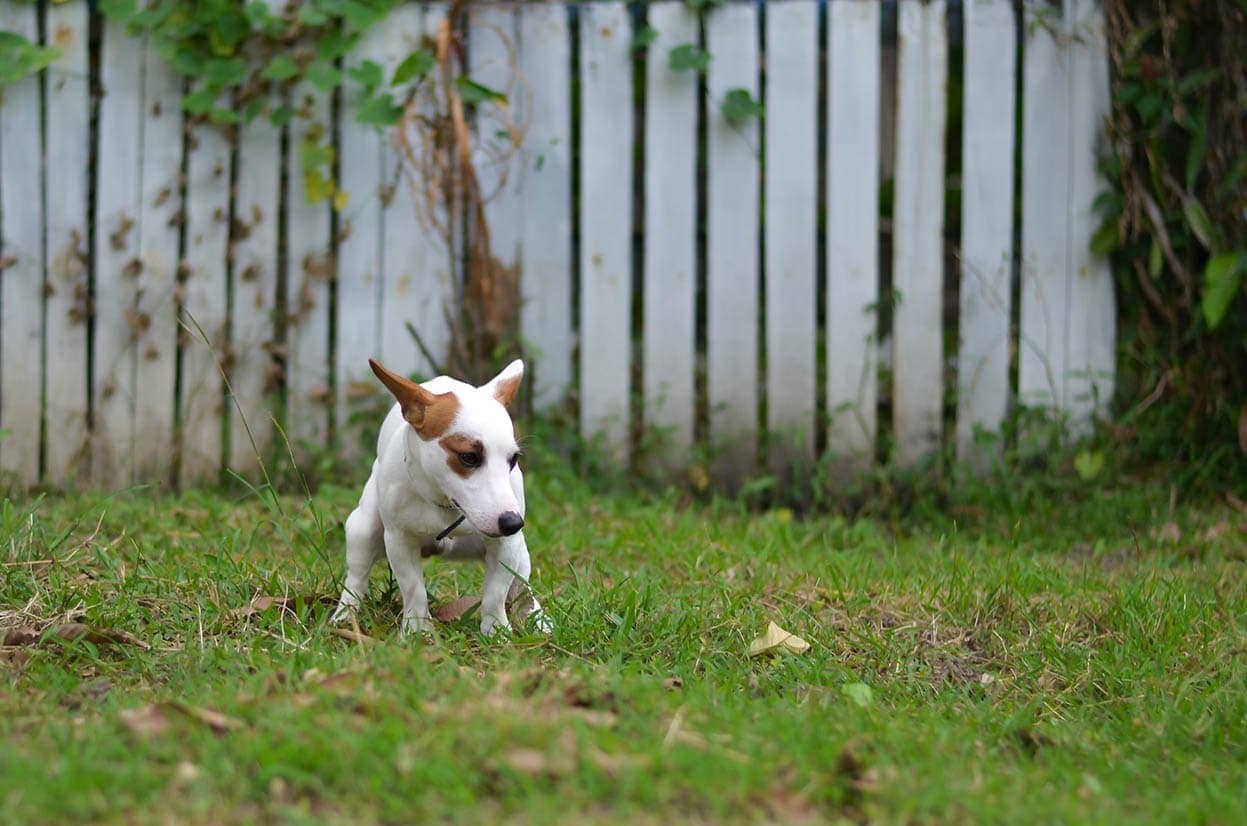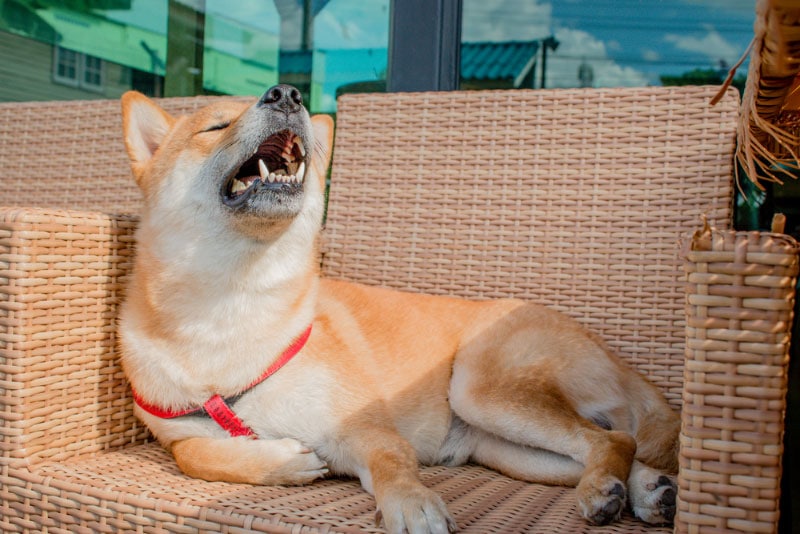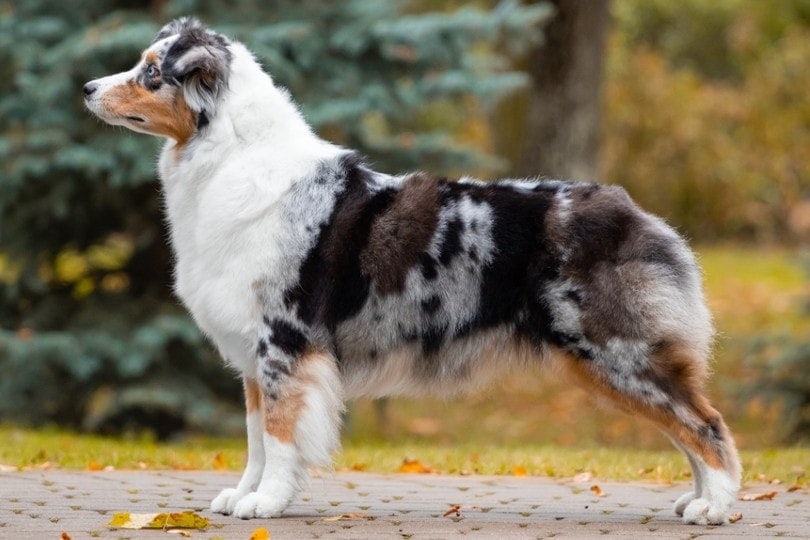20 Least Popular Dog Breeds (Based on Studies)

Updated on
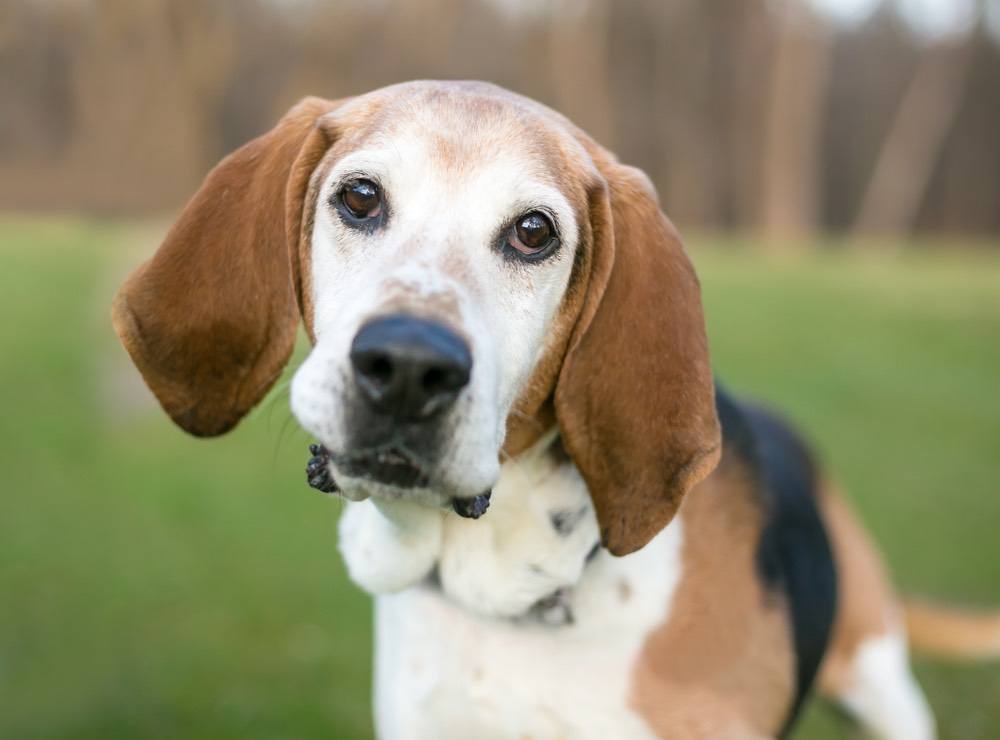
Everyone knows the Labrador Retriever, the German Shepherd, and the English Bulldog. These dogs are extremely common and always rank near the top of any “most popular dog breeds” list.
But what about the least popular dog breeds? The ones you’ve never even heard of, much less seen? How come nobody ever makes a list of those?
That’s all about to change. Today, we’re looking at 20 of the rarest and least commonly owned dog breeds on the planet. All our information comes from data provided by the American Kennel Club1 and the U.K.-based The Kennel Club.2
One quick note before we begin: This list only concerns itself with purebred animals. We’re sure that your English Mastiff/Chihuahua mix is the most unique dog in the world, but it would be impossible to list all the various mixes that could make this list. Here are the 20 least popular dog breeds:
The 20 Least Popular Dog Breeds:
1. New Guinea Singing Dog
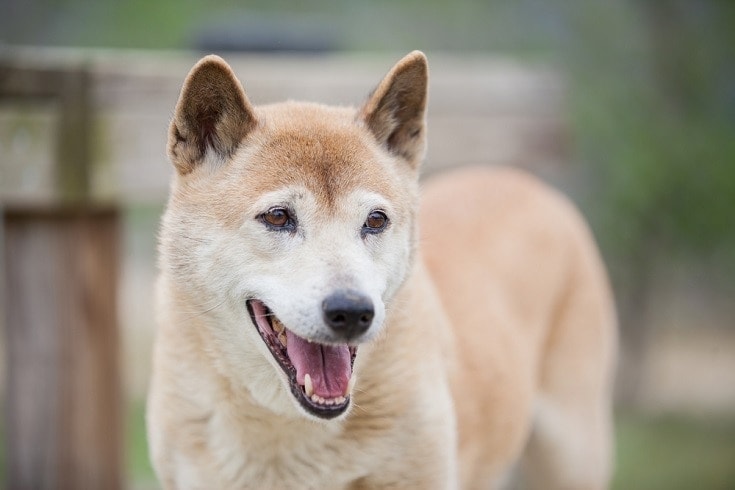
The New Guinea Singing Dog is such a rare pet that it’s owned by exactly no one. These animals, considered the rarest dogs in the world, are only found in conservation centers, and it’s estimated that there are only 200-300 specimens alive today.
It’s probably for the best, though, as these animals certainly live up their name. We can’t imagine that your neighbors would be happy to learn that you’re bringing a “singing dog” to live in the upstairs apartment (especially since these pups can’t carry a tune to save their lives).
2. English Foxhound
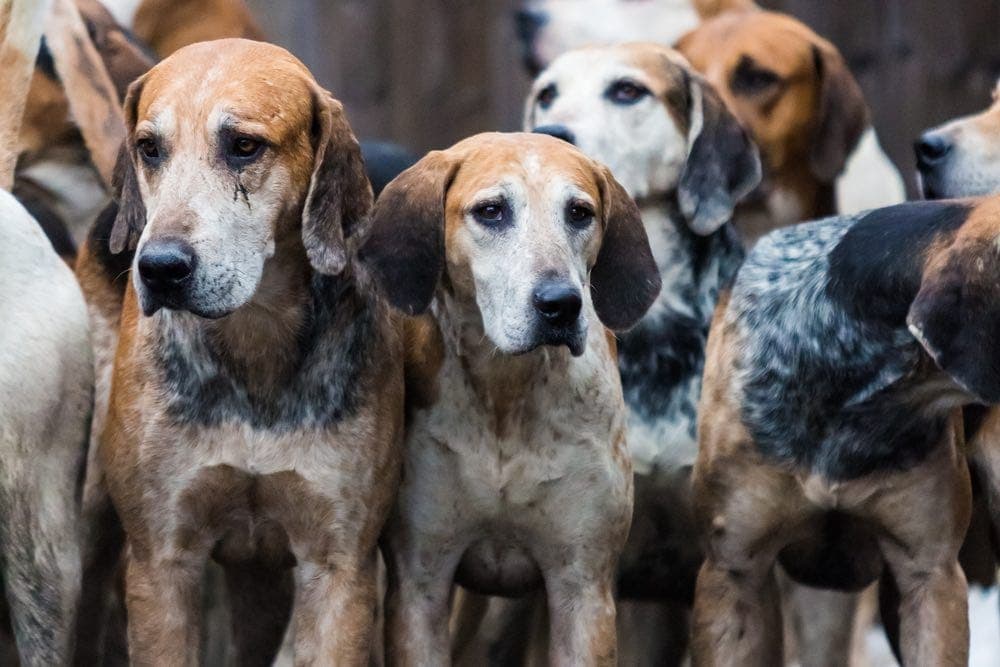
Looking like an overgrown Beagle, the English Foxhound is a regal companion that lives for the hunt. Of course, given that fox hunting has largely fallen out of favor, there’s not much call for their services anymore.
While we’re happy they’re not often used to track down innocent foxes anymore, it’s a shame that these dogs aren’t more successful at finding homes. They’re extremely healthy, they’re gentle with kids and other pets, and they love to spend time with their owners. Sounds like a good dog to us.
3. Komondorok
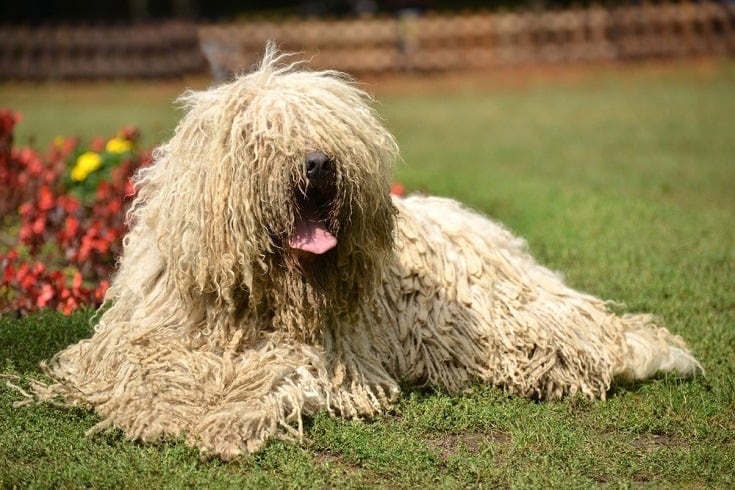
If you’re familiar with this breed, you most likely know them better by the singular version of their name: the Komondor. These Hungarian Sheepdogs have long, corded coats that make them look like giant mops with noses.
That coat may be one of the reasons that these dogs aren’t more popular, as it requires quite a bit of upkeep. However, this is a calm, patient dog that will risk their life to protect the ones they love, so you should consider bringing one home if you’re worried about your family’s safety.
4. Cesky Terrier
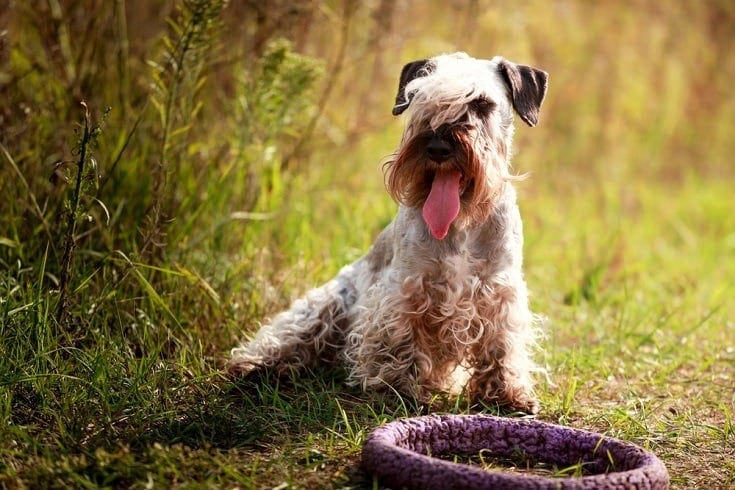
These small, powerfully-built dogs are a relatively new breed, as they’ve only been around since 1948. However, they make fantastic pets, as they’re not as high-strung as some other smaller breeds, and any aggressive tendencies have been pretty much bred out of them.
They’re fine sitting around an apartment all day, as their exercise needs are minimal, and they’re not likely to disturb you with incessant barking. In fact, the worst thing about these dogs may be how hard they are to track down, as Cesky breeders are few and far between.
5. Otterhound
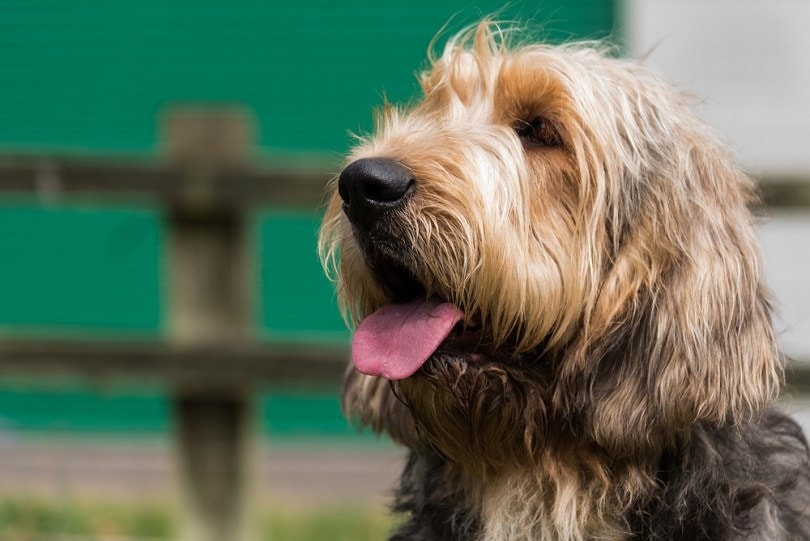
Otterhounds are truly unique dogs. Bred to hunt both on land and in the water, they have oily coats and webbed feet, as well as powerful snouts that allow them to track their quarry for up to 72 hours over mud and water.
These are big pups, tipping the scales at between 80 and 115 pounds, and they’re extremely athletic — when they want to be. There are few physical challenges that this breed can’t master, but their favorite activity is likely to be curling up next to you for a few hours in front of the TV.
6. Norwegian Lundehund
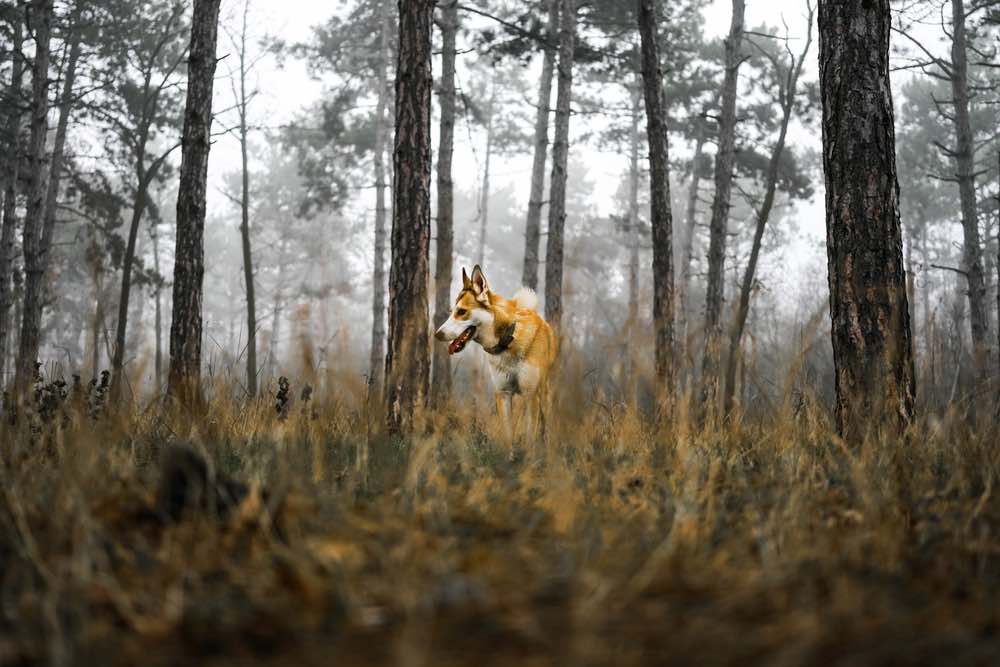
These tiny pups were originally bred for hunting puffins, and it seems as if they’re having a hard time finding work these days. They’re extremely flexible and can cram themselves into all manner of tight spaces — in fact, they can bend their heads backward and fold their arms at 90° angles, just like humans.
One of the biggest challenges facing the breed is a history of inbreeding, as this has caused them to have small litter sizes and short lifespans. Fortunately, many Lundehund enthusiasts are working on finding new uses for the dogs, so hopefully, their numbers will pick up again in the years to come.
7. Sussex Spaniel
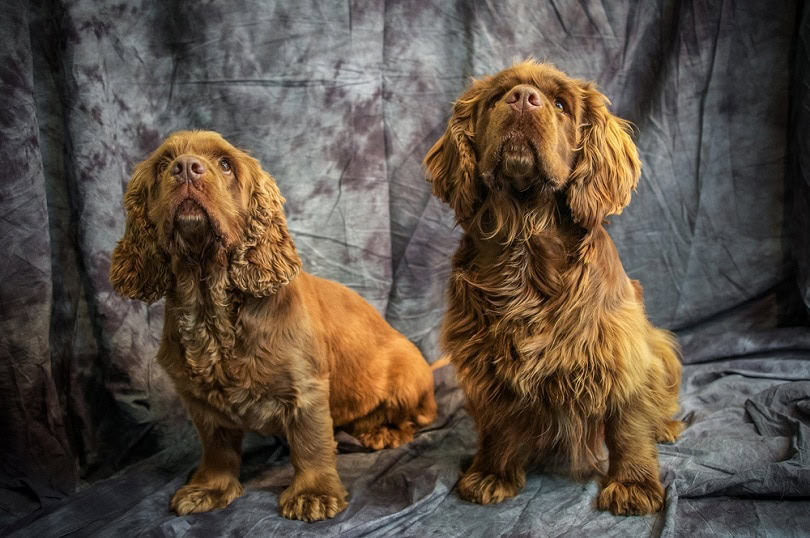
These British dogs have long, silky golden coats, making them look sleek and dignified. That’s all a façade, though, as the Sussex Spaniel is one of the goofier dog breeds on the planet. They love to play and clown around, and they’re not as energetic as many other medium-sized breeds.
The breed almost went extinct following WWII but was saved due to a concerted effort by several British and American breeders. They’ve never really caught on since, though, and remain one of the rarer dog breeds on the planet.
8. Harrier

The Harrier represents a middle-ground between English Foxhounds and Beagles, at least in terms of size. They’re extremely muscular with large bones, making them ideal for long, strenuous activity. Of course, long, strenuous activity isn’t popular these days, so maybe it’s no surprise that these dogs are on the decline.
That’s a shame, as they’re loving and loyal, not to mention incredibly good with kids. They’ll get along smashingly with other dogs, but you don’t want to bring them into a home with smaller, non-canine pets, as they’ll never be able to fully turn off their hunting instinct.
9. Dandie Dinmont Terrier
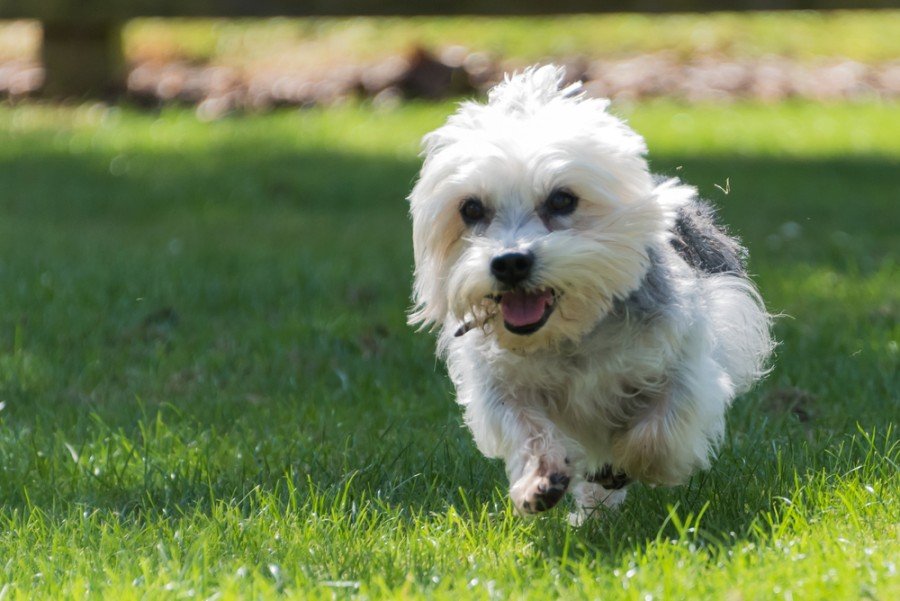
These Scottish pups have long torsos, short little legs, and a distinctive mass of hair on top of their heads. They’re a sociable dog, but their outgoing nature obscures the fact that these are not dogs to be trifled with.
Like the Sussex Spaniel, the Dandie Dinmont Terrier was almost driven into extinction by WWII, and it’s still a vulnerable breed today. It also doesn’t help that these pooches have higher rates of cancer than many other breeds.
10. Glen of Imaal Terrier

Apparently, it’s a bad time to be a small hunting dog from the United Kingdom, as the Glen of Imaal Terrier represents another such entry on this list. These tiny pups were bred to sneak silently into dens to flush out foxes, rats, and otters, and they remain one of the quietest dog breeds on the planet.
There are only a few hundred of these dogs registered in the United States, and there may be even fewer in the United Kingdom. That’s a shame, as these dogs make easygoing pets (and surprisingly good watchdogs).
11. Sloughi
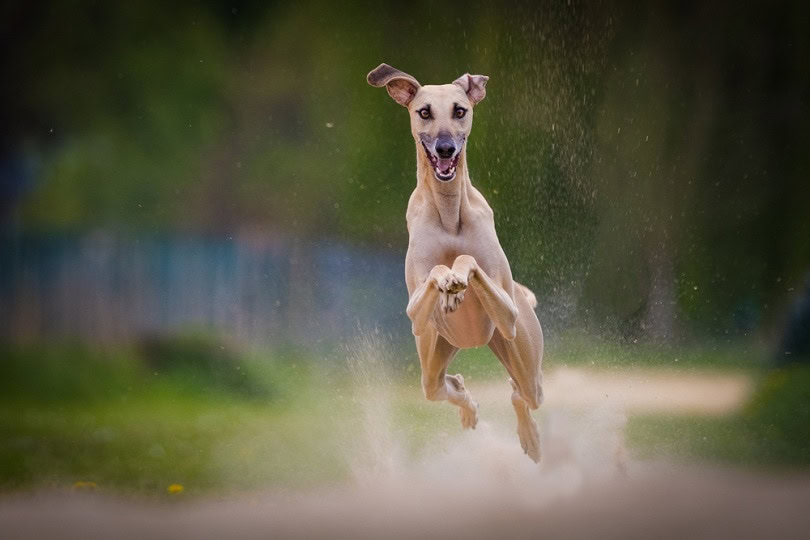
The Sloughi is basically a North African Greyhound, as they’re incredibly fast sighthounds with long, slender bodies. They’re not fragile by any means, though, as they were originally bred to hunt animals like jackals and wild pigs.
These dogs are still used for hunting in certain North African countries, but they’ve never really caught on outside of that relatively narrow geographic window. If you decide to bring one home, make sure you have plenty of space, because these dogs need room to stretch out their legs and occasionally hit top speed.
12. Azawakh
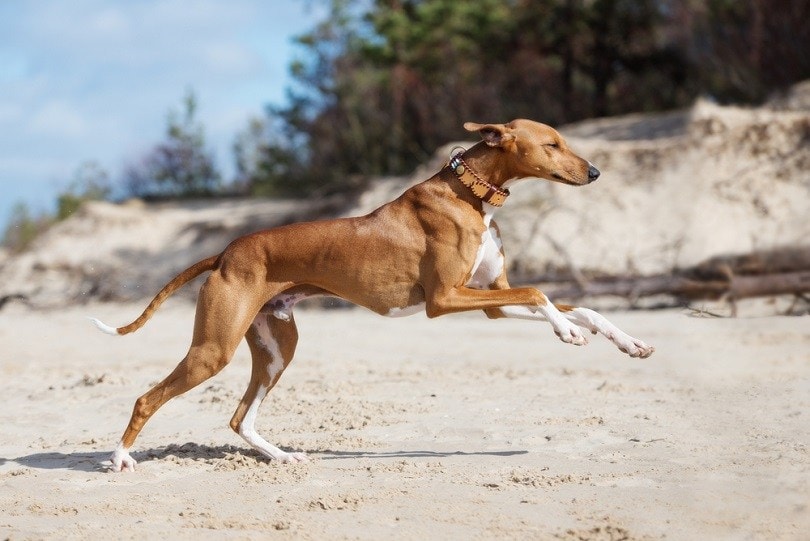
A close relative of the Sloughi, the Azawakh comes from West Africa, where it’s usually found in the company of the nomadic Tuareg people. These dogs look more like big cats when they move, as they have a graceful, slinky gait that allows them to sneak close to their prey before giving chase.
As you might expect, then, the Azawakh is not a good fit for a home full of cats. However, they’re extremely healthy and ferociously protective, so it’s a mystery as to why they’re not more popular outside of Africa.
13. Chinook
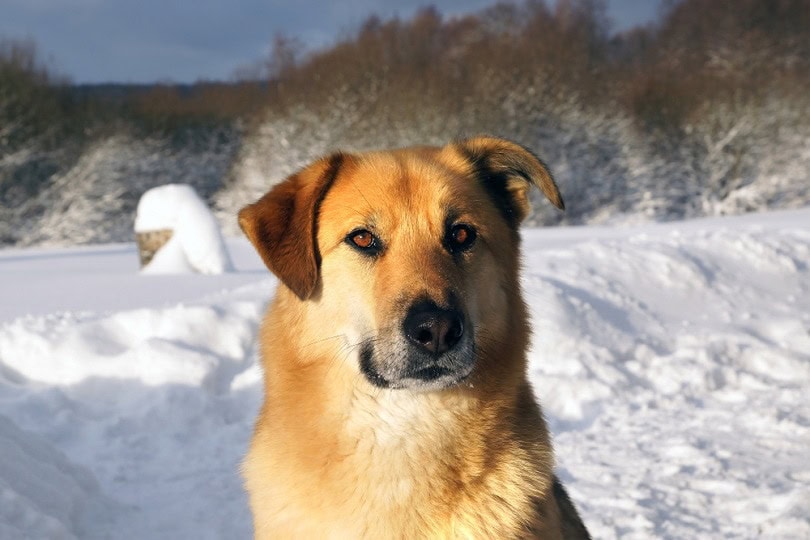
When you hear “Chinooks,” you may think about helicopters, but these are actually American sled dogs. In fact, they’re the state dog of New Hampshire, which is also where the breed was originally developed.
They’re excellent working dogs, as in addition to pulling sleds, they’re often used as search-and-rescue animals. They’re extremely outgoing and great with kids, but they may not be the best fit for families who live in dry, hot climates.
14. Cirneco dell’Etna
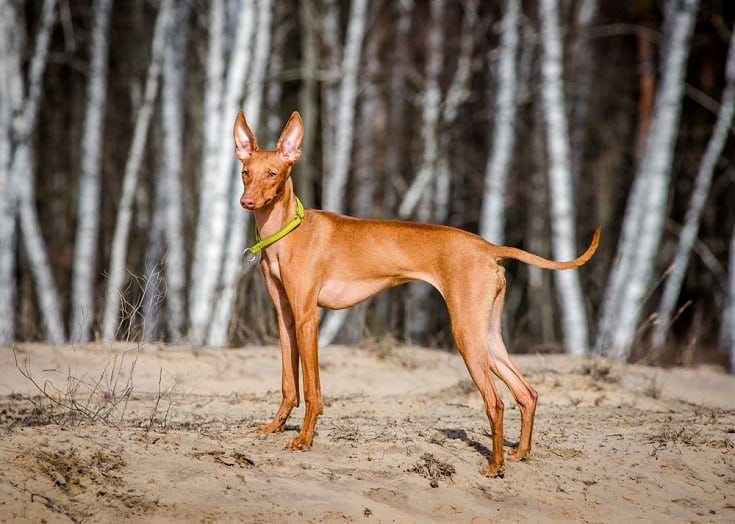
These small Italian hunting dogs were bred to run down rabbits, so you know they’re fast. They also have a powerful sense of smell, so don’t think that you can get away with hiding treats from them.
Cirneco dell’Etnas are revered in their native country, but they’ve never enjoyed much popularity outside of Italy. That may just be due to the fact that there isn’t much call for hunting rabbits in many countries these days.
- If you’re interested in getting a hunting dog breed, you might like to get some gear to go with them. Check out our 10 Best Dog Hunting Vests Reviews & Top Picks
15. Pyrenean Shepherd
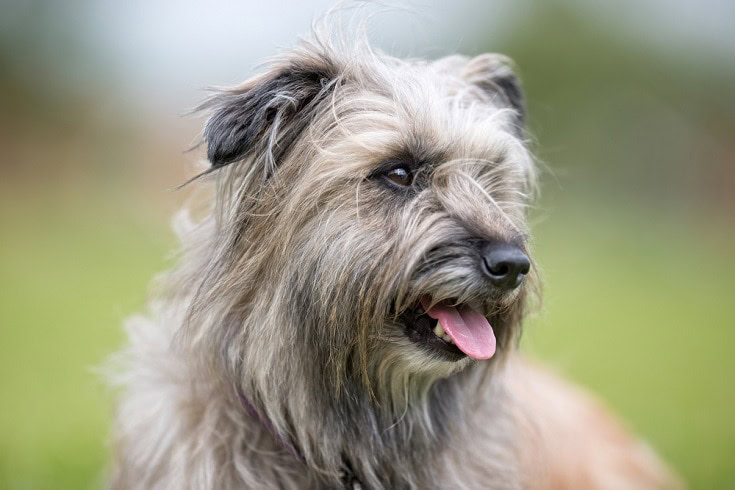
Pyrenean Shepherds come from the Pyrenees Mountains in France and Spain, which is the same region that the more-popular Great Pyrenees hails from. In fact, the two breeds were often used together to herd sheep; the smaller Pyrenean Shepherd kept the flock in line, while the massive Great Pyrenees protected them from predators.
These dogs are athletic and energetic, so they’re not a good fit for laidback families. If you have plenty of room for them to run and jobs for them to do, though, the Pyrenean Shepherd will make a wonderful companion.
16. Canaan Dog
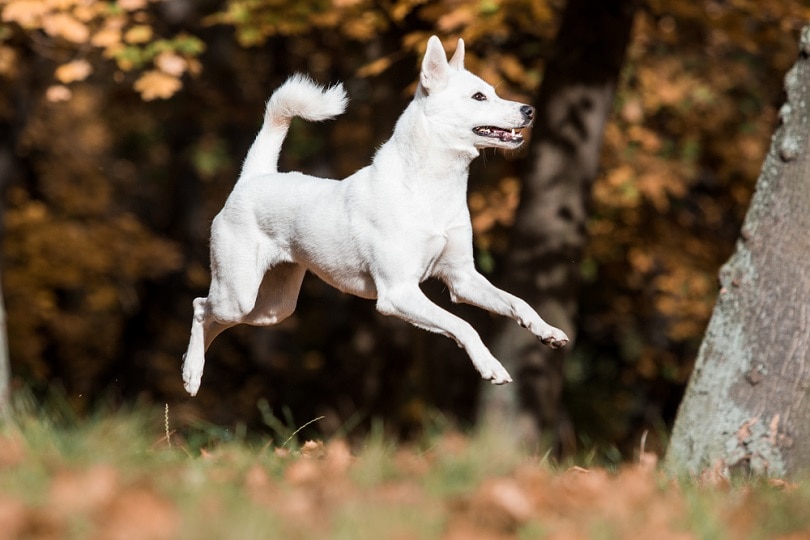
This is an ancient breed, as specimens have been found dating to well before the time of the Persian Empire. They were commonly used by the Bedouins for protecting their camps and flocks, although many of them were also allowed to roam, causing them to become feral.
They began to be re-domesticated in the 1930s, though, as the Israeli special forces found them useful as working dogs. However, they’re still independent and headstrong, so they’re not a good fit for first-time owners.
17. Finnish Spitz
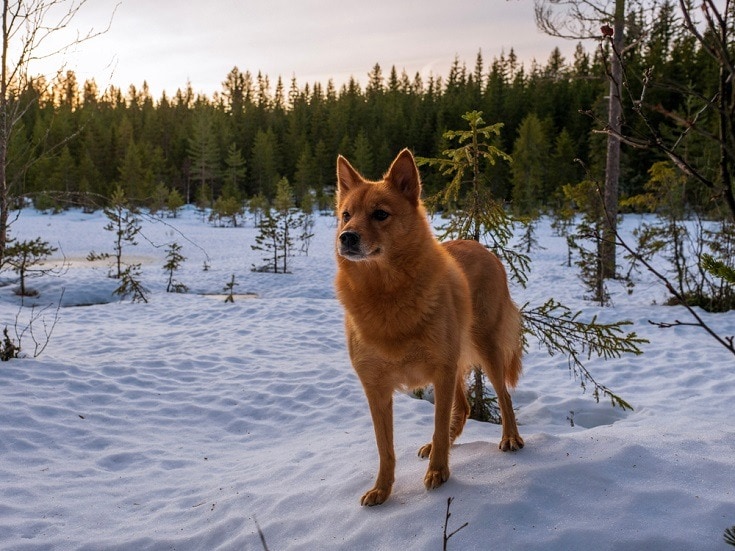
Finnish Spitzes are medium-sized dogs, as they only weigh about 30 pounds or so, but their small stature belies a giant spirit. In fact, these dogs are often used for hunting elk, and they’ve been known to challenge bears.
That may not say much about their intelligence, but it does speak to their fearlessness. They’re also friendly and good with kids, but their reputation as the “King of the Barkers” may make them a poor fit for apartment life.
18. Plott Hound
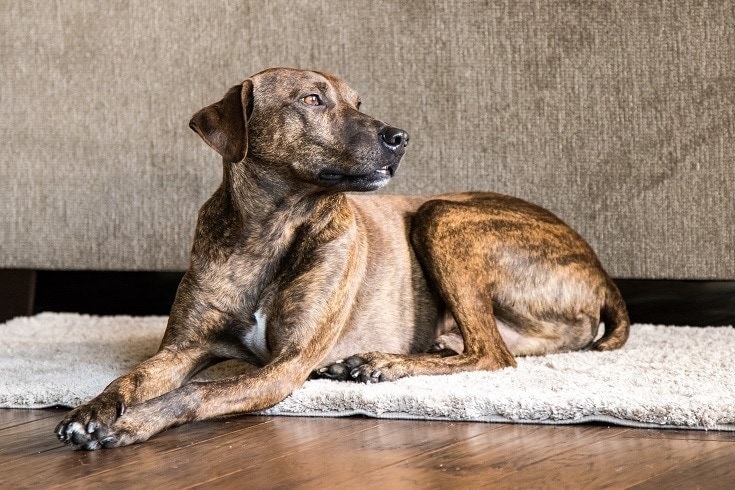
They have the long, floppy ears that you’ll find on other scent hounds, but beyond that, the Plott Hound looks more like a Great Dane or a Weimaraner than a Bloodhound or Basset Hound. They’re fairly big at 50-60 pounds and extremely athletic.
They don’t have the baggy skin that’s commonly found on other hounds, and they also have incredible speed and endurance. They have extreme exercise needs, but if you can keep up with them, you’ll have a fantastic mutt on your hands.
19. Entlebucher Mountain Dog
The Entlebucher Mountain Dog looks like a smaller version of the Bernese Mountain Dog, as they only clock in at about 65 pounds. However, they’re just as rugged and powerful, as they were bred to keep herds of cattle on the move.
They almost went extinct after WWI, but their numbers have slowly but steadily risen since then. They do have one huge advantage over their Bernese cousins in that they’re much healthier than that giant breed.
20. Kuvaszok

Kuvaszok, which is the plural of “Kuvasz,” are big dogs with beautiful white coats that allow them to blend in with the flocks they protect. They’re extremely smart and independent dogs, but they’re also fun-loving and loyal, making them excellent pets.
You shouldn’t necessarily bring them into a multi-dog household, though, because they were bred to attack wolves, coyotes, and other canine-like creatures. That makes proper socialization a must and likely eliminates any chance of taking them to your local dog park.
Final Thoughts
While the pups on this list may not be popular, they’re still fantastic dogs and deserving of more renown than they currently receive. Some of them may be hard to track down, but if you can find one, these breeds will make incredible companions for you and your family.
Also, adopting one of the breeds above allows you to act snobbishly toward all the other families in your neighborhoods who own basic Golden Retrievers or Poodles.
See Also:
- 10 Most Popular Dog Breeds in Massachusetts: Update (With Pictures)
- 10 Dog Breeds That Look Like Foxes (With Pictures)
Featured Image Credit: Mary Swift, Shutterstock


